Your monthly update from SPAWN
July Newsletter
Things are starting to kick into high gear for SPAWN as we begin our habitat restoration project on the former San Geronimo golf course to remove the highest priority fish passage barrier in central California! There will be many opportunities to participate in the restoration project, which is a long-awaited collaborative effort between several local, state, and national agencies. We continue to monitor the COVID-19 pandemic and are taking every precaution to minimize the risk of transmission among staff, interns, volunteers and workers. Therefore, when opportunities are made available for participation in our community habitat restoration project, you'll be the first to know. Stay tuned!
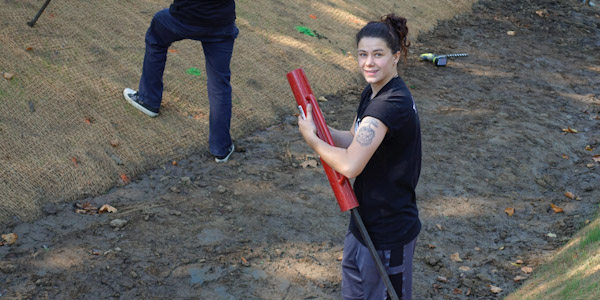
In Memory of Michal Michiels
SPAWN is saddened to learn that one of our former interns, Michal Michiels, recently passed away on June 12. Michal was a beautiful, vibrant, energetic and hard-working young woman who was passionate about protection of nature and wildlife. She worked with us during the summer and fall of 2018 and was an instrumental part of our habitat restoration crew during our Lagunitas Creek Floodplain Phase I restoration project. She helped with all aspects of the project from site preparation, skilled labor, erosion control, and revegetation. It’s no exaggeration to say that Michal installed more native willow stakes than any other member of the professional restoration company. We will remember Michal as someone who loved her family, friends, and her roots. We will remember her great sense of humor, easy-going nature, and dedication to loving and caring for animals. She will be sincerely missed.

SPAWN Completes Post-Construction Monitoring Report for Lagunitas Floodplain Project Phase I
The Salmon Protection and Watershed Network (SPAWN) recently completed our Year 1 Post-Construction Monitoring Report for the Lagunitas Floodplain Restoration Phase I. The Lagunitas Creek Floodplain and Riparian Restoration Project was proposed by SPAWN to support improvements to riparian ecosystem function and address limiting factors for coho salmon and other listed species in Lagunitas Creek, the focus area of which has been impacted by historic residential development, encroachment from highways and railways, and watershed changes from a regulated flow regime and upstream dams.
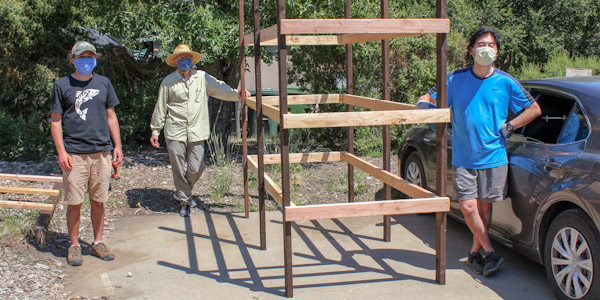
Pathogen Prevention: New Shelving for Pots
We have added two new shelving units to the nursery which are designed specifically to hold clean pots. The shelves were added as part of an ongoing process of upgrading the nursery to meet best management practices (BMPs) for pathogen prevention in the nursery. It’s recommended that plants and pots are raised at least two feet off of the ground to reduce the possibility that potentially contaminated soil will splash from the ground onto clean pots. The lowest shelf is raised two feet off the ground on our new shelving units. There is still plenty of space for storage, as each unit contains three shelves which are each eight feet long, four feet wide, and two feet deep. The shelves were built by our habitat restoration intern, Logan Anderson, and our long-term nursery volunteer and resident handyman Dean Hanson. We are very grateful for their hard work and ingenuity!

What's Blooming in the Nursery? Western Buttercup
Western buttercup (Ranunculus occidentalis) is a pretty perennial herb that typically blooms in the spring, but we created just the right conditions in the nursery shadehouse for this plant to bloom in the summer! Western buttercup is one of the first flowering perennials to emerge in the spring, starting to bloom as early as March in Marin, but depending on the geographic location and latitude it can bloom as late as August. The bright yellow flowers are especially attractive to native bees and provide an important source of nectar and pollen for early-season pollinators. Western buttercup thrives in moist soils and is commonly found in riparian areas, but can be found in coastal prairies, wet meadows, bluffs, and forested areas. It grows in full sun as long as it has plenty of water, and also does well in partial shade.
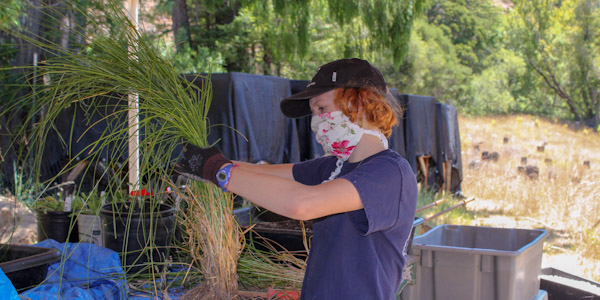
Volunteers Rescue Plants from Roy’s Pools
In preparation for our upcoming restoration project at Roy’s Pools we are rescuing native plants that are in the pathway of excavation. With the help of our dedicated nursery volunteer crew we have already rescued hundreds of plants, including sword ferns (Polystichum munitum), snowberries (Symphoricarpos albus), California blackberries (Rubus ursinus), dense sedge (Carex densa) and many other native plant species. The rescued plants have been potted up and will be cared for in the nursery until they can be outplanted at the newly restored site this winter.
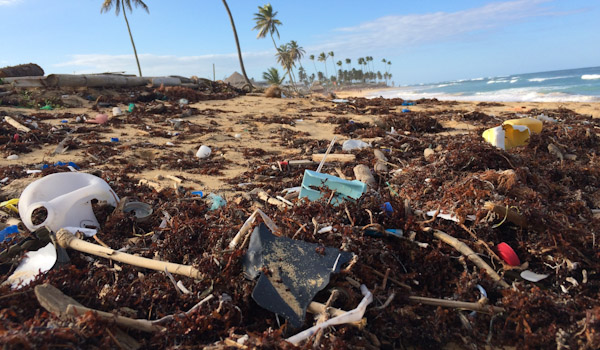
California Residents: Take Action Against Plastic!
California is on the forefront of reducing pollution from single-use packaging and products. Proposed landmark legislation, The California Circular Economy and Plastic Pollution Reduction Act, would establish a California-wide comprehensive framework to address the pollution generated by single-use packaging and products 75% by 2030. The bills set ambitious goals and direct CalRecycle to reduce waste from single-use packaging and the most problematic plastic disposable items, saving local governments millions of dollars in disposal costs and protecting our environment. Experts agree that upstream reduction of packaging and packaging waste is the most effective and least expensive way to protect wildlife, public health, and environmental health. If you are a resident of California, please contact your representatives today and tell them to vote YES on this exciting legislation!
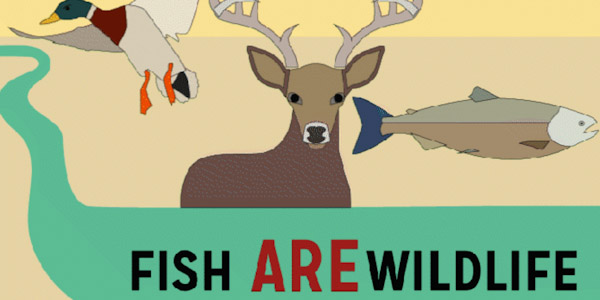
Food for Thought: Fish ARE Wildlife
For too long, “fish” have been viewed as separate from “wildlife” by government conservation agencies and the general public; and it needs to change. The reasons for this disconnect are not completely clear, but it may relate to allowing humans to feel better about the regular inhumane slaughter techniques fish often face — either butchered alive or captured and left out of water to die. Some have even claimed falsely that fish don’t feel pain to justify these practices. But mentally separating fish from wildlife has real-life repercussions. Today, the commercial capture of fish remains one of the largest harvests of wild animals on the planet. We need to ensure fish are viewed on the same level as wildlife to grant them the necessary protections they need to survive. Julia Janicki, recipient of Turtle Island Restoration Network’s Cocos Island scholarship in 2019 and current data visualization consultant at United Nations Volunteers, created this illustration to convey the fact that fish are wildlife! Thank you, Julia!
|
|
|